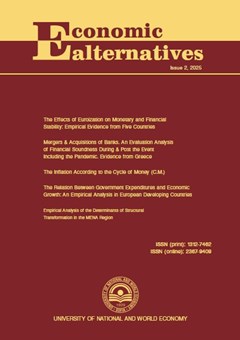The Inflation According to the Cycle of Money (C.M.)
Author: Constantinos Challoumis
Abstract
This paper shows that inflation is a result of more money in an economy without appropriate distribution and reuse; there is no productivity of the economic units. The problem statement is to clarify that inflation is not about the quantity of money, but the result of the quantity of money when it does not come from a productive economic activity, meaning that inflation exists when the higher prices don’t comply with the productivity and the economic activity of an economy. The objective of this research is to show that inflation should be interpreted in terms of the productivity of the economy and adhere to the distribution and reuse of money based on the CM (Cycle of Money). The current research aims to show the term Domism. Domism is the economic condition in which the rise in the quantity of money corresponds to increased productivity, proper distribution, and effective reuse of money within the economy. It reflects a well-structured economic environment where inflation is mitigated due to the alignment of money supply with real economic activity, ensuring that higher prices are justified by increased value creation. Appropriate responses should be provided in both cases, when domism is high and when it is low. High domism means that the economy has higher values, because of the increased distribution and reuse of money, or better productivity of the economy. The economy’s function and structure are linked through the money cycle, affecting productivity. Inflation reduces the money cycle, lowering exchange rates, while deflation increases it. The methodology is based on the Q.E. method.

